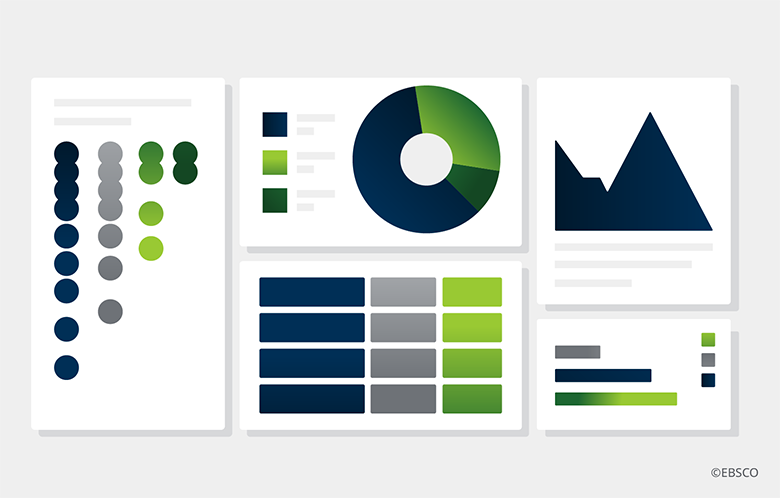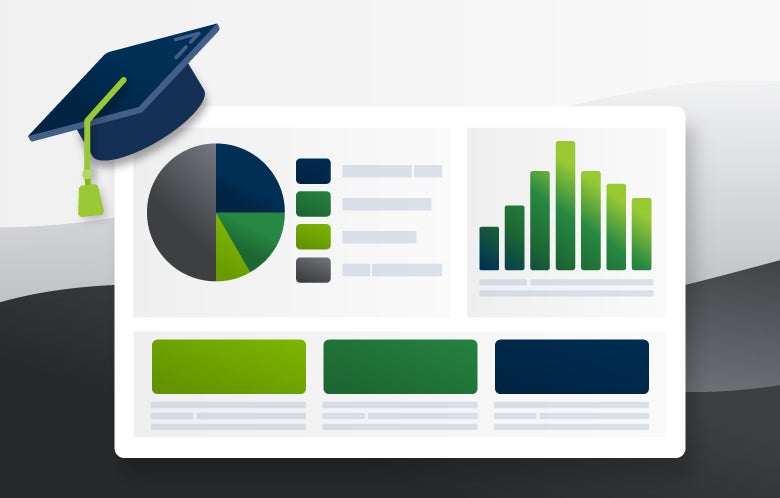Measuring the reach and influence on student success in higher education, “learning analytics” is a relatively new concept. The phrase was first coined in 2000 by Mitchell and Costello as it relates to the business of online learning products. But it wasn’t until a decade or so later that the term evolved into a topic within education and academics.
Learning analytics is a simple concept to understand — essentially it defines optimizing learning — how individuals learn and the environments in which they learn. Learning analytics can be used to improve core educational components of the academic institution including identifying courses, improving curriculum, improving instructor performance and post-educational employment. Learning analytics combines data mining and processing with integrated technologies and reporting capabilities to identify trends, understand impact on student success and identify academic “at-risk” students. Tracking student demographics allows for deep insight into how parts of an academic institution work together to influence academic success.
Improving how students learn and conduct research can depend on how skilled they are in information literacy, their ability to locate, retrieve, evaluate, select and use information resources. It is common for libraries to spearhead information literacy instruction, with librarians as the facilitators of research skills. Having impactful data that correlates library usage with student success demonstrates the importance of the library and solidifies librarians as the stewards and builders of an important foundation for successful learning.
Having impactful data that correlates library usage with student success demonstrates the importance of the library and solidifies librarians as the stewards and builders of an important foundation for successful learning.
Having impactful data that correlates library usage with student success demonstrates the importance of the library and solidifies librarians as the stewards and builders of an important foundation for successful learning.
The recent years have added some complex layers to learning analytics. One layer is the privacy of data generated from the learner or student. With the rise of privacy regulations across the globe such as GDPR and regional efforts such as the California Consumer Privacy Act, the way institutions leverage learning analytics needs to be a considerate strategy. Part of the strategy also needs to be how the library influences the way people learn. For libraries, this evolutionary data approach has a two-fold challenge. One, of course, is this maintaining user privacy. For librarians, there is an ethical responsibility to protect patron privacy while providing detailed user engagement metrics. The other is the challenge of automating and streamlining secure access to data sets. Librarians can be faced with accessing and gathering data from disparate platforms and manually combining data for analysis. While this approach was somewhat sustainable with traditional library metric reporting, it cannot scale with additional data sets needed to provide a holistic view of the library’s influence. Not only is the manual process of data analysis painstaking, but it also increases the risk of data loss and more importantly, the possibility of a data breach.
To learn more about privacy in library analytics download the white paper >
What are the best ways to properly align library data with learning analytics? A great place to start is the Learning Analytics Toolkit, recently published by the ACRL. This toolkit provides information on privacy and ethics, potential outcomes and examples of library data that can be linked to student success.
Even with a solid foundation of this topic, many libraries are still stuck with the problem of streamlining disparate data sources and having a centralized place to access secure data. The next step is to leverage a library analytics platform that can streamline data and centralize multiple data points (such as student GPA and e-resource usage) into a single dashboard.
Watch this video to see how easily you can connect library usage to student success and contribute to the conversation of learning analytics in your academic institution.



